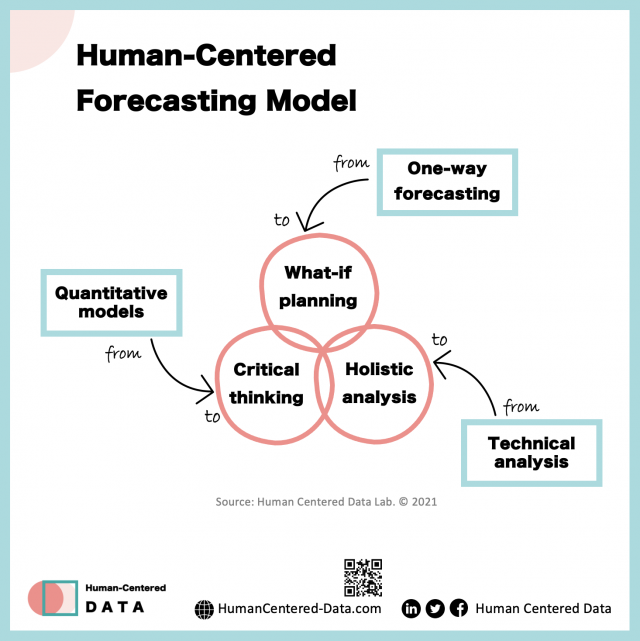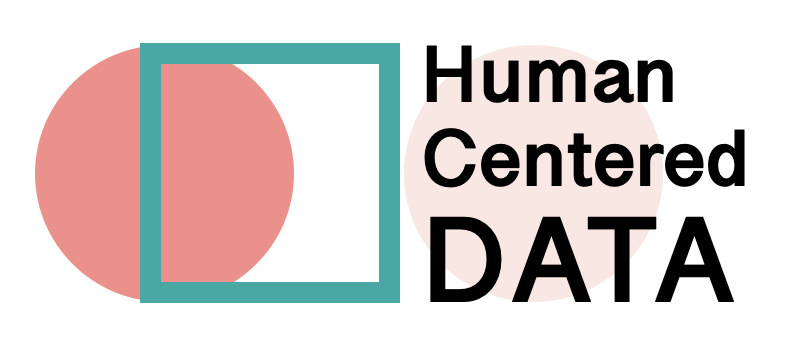Let’s think of forecasting results after the financial crisis in 2008, then the covid-19 pandemic in 2020. Let’s think of the big data that is derived from customer behavior before the pandemic, is it now valid to understand the customer behavior after the pandemic.
Let’s ignore the special events in history that break of forecasting efforts and future insights; and think again about the forecasting methods.
The current forecasting methods, which I will call the traditional methods, depending basically on the concept that: the future will continue the past trend.
So, statisticians usually used sophisticated models to understand the data behavior, then assume that data will behave the same model with some possible changes. Thus, it is not surprising, a survey showed that one in four companies are unhappy with their sales forecast accuracy.
Before we discuss the forecasting method, let’s ask ourselves: Why do we forecast?
Simply because we want to plan, whatever the uncertainty we face, we should plan, and thus, we need forecasting. So, forecasting is the tool of planning, while planning is the target. If we think that way, we may keep the target and modify the tool when a necessity.
To think differently about forecasting and how to use it successfully in planning, I will explain the concept as the comparison between what I call it “traditional forecasting method” and what I am working to introduce newly “Human-Centered Forecasting”.
- From (one-way forecasting) to (what-if scenario planning). Traditional forecasting depends on predicting the behavior of the indicator in the future, statisticians usually identify the possibility of occurring that behavior and the expected error. What I suggest is to focus more on the human need for forecasting, planning, and forecast the possible main scenarios. For example, instead of forecasting the Covid-19 infections after one year, and taking the risk on that forecasting, we transfer to analyze the main possibilities, what if Covid-19 infections raised to 100 million in the US in 2022, what is the possibility of that, and what we will do if that occurs. Then, what if the infections decreased to less than one million in 2022, what is the possibility of that, and what we will do then?
- From (fixed quantitative models) to (critical qualitative thinking). Traditional forecasting depends on identifying the key indicator (statisticians call it the dependent variable) and what other factors drive the change of that indicator. That way may be true in some situations, but we should not trust heavily on quantitative processing. Rather, we need to think critically about the drivers and dig deep into the root causes. For example, suppose we are forecasting the sales through analyzing and forecasting the key drivers of sales: price, advertising spending, and size of the sales force. Let’s ask ourselves again, why the size of the sales force drives the sales? Because they close sales with retailers. So, what drives their ability to close sales? Their skills or the commission? So, we need to think about the root drivers using critical thinking techniques such as “So, What?” and “What Consequences?”, etc.
- From (technical analysis) to (holistic analysis). Human is more complex than we imagine, so how come we forecasting human feelings? So, to forecast complex issues, especially those that are related to humans, we need to merge the human sense with quantitative techniques. Yes, whatever the quantitative forecasting you did, you need to ask humans in an open discussion. Dr. Matthias Seifert and Allègre L. Hadida suggest interviewing three experts for each forecasting process and give their opinion a weight to the forecasting results.
Let’s think of technical analysis versus the fundamental analysis in stock valuation, Warren Buffet, for example, uses a more holistic approach in forecasting and estimating the real future value of the company.
The key idea of this article, or what I call Human-Centered Forecasting, is not to ignore numbers and quantitative methods, rather, we should balance between qualitative and quantitative ones and balance between machine and human!

This article is authored by Human Centered Data LLC
All rights reserved © 2021
Engage with us:
- Need consulting and support to be data-driven? Request a free one-hour consulting session by submitting the form.
- Found this article is useful, please share it on social media.
- Have an opinion, your feedback is much appreciated! Comment here or contact us.
- Want to join us as a consultant, a trainee, or a volunteer? Submit the form.
- Request the virtual in-house Human-Centered Data Program and get the knowledge and tools for the future of data. Request the brochure by submitting the form.
References and copyrights:
- How to cite this article to your research: Human Centered-Data Co. (2021). Human-Centered Forecasting: This is the New Era of Analytics. Retrieved from www.HumanCentered-Data.com.
- Want to reprint this article or translate it to your language? It is our pleasure to help via: [email protected].


One comment
מחפש דירות דיסקרטיות בקריות? המטפלות הכי חמות בעיר
August 18, 2022 at 1:43 pm
I need to to thank you for this good read!! I definitely loved every little bit of it. I have you book-marked to look at new things you postÖ